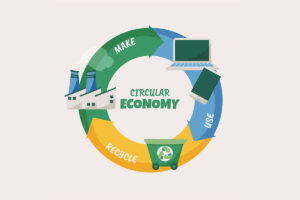
Expanding
Borders

Delivering Success

Connecting
Markets
Empowering Growth
About Us
Red Horizon Global is a dynamic startup driven by the vision of transforming international trade.
Services
Cras a elit sit amet leo accumsan volutsudisse.

Product Sourcing & Procurement
We connect you with reliable suppliers worldwide, ensuring high-quality products that meet your specific requirements.
View More »
Market Research & Analysis
Gain valuable insights into global markets with our in-depth research and analysis, helping you make informed business decisions.
View More »
Regulatory Compliance & Documentation
Our team handles all regulatory paperwork, ensuring your exports meet international compliance standards without delays.
View More »
Logistics & Supply Chain Management
From shipping to customs clearance, we manage your entire supply chain, ensuring timely and efficient delivery.
View More »
Risk Management
Identify and mitigate risks in your global trade operations with our expert-driven risk management solutions.
View More »
Marketing & Sales Support
Expand your market presence with our tailored marketing and sales strategies designed for global success.
View More »
Customer Support & After-Sales Services
Our dedicated team provides ongoing support and after-sales services, ensuring long-term customer satisfaction.
View More »
Cultural & Business Etiquette Training
Equip your team with the cultural understanding and business etiquette needed to thrive in international markets.
View More »
Technology & E-Commerce Solutions
Leverage cutting-edge technology and e-commerce solutions to streamline your global trade operations and increase sales.
View More »
Consulting & Advisory Services
Get expert guidance on international trade strategies, from market entry to operational optimization.
View More »
Sustainability & Compliance
We help your business meet global sustainability standards and ensure compliance with ethical trade practices.
View More »Expert Team
Tailored Solutions
Global Network
Quality Assurance
Why Us





Blog
Explore global trade insights, market trends, and the latest updates
By
Red Horizon GlobalGreen Supply Chains: How Sustainability is Reshaping Global Trade
In today’s global marketplace, the growing demand for sustainability has fundamentally altered the way businesses operate, especially in the realm of export and import. As environmental concerns take center stage, companies are realizing that building a green supply chain is not only a matter of social responsibility but also a crucial element of business strategy. From reducing carbon emissions to sourcing responsibly, sustainability is reshaping global trade in profound ways.
What is a Green Supply Chain?
A green supply chain refers to the integration of eco-friendly practices into the production, transportation, and distribution processes of goods. It encompasses sustainable sourcing, energy-efficient logistics, reducing waste, and minimizing the environmental impact of manufacturing. The end goal is to lower the carbon footprint across all stages of the supply chain, ensuring that the products delivered to consumers are aligned with global environmental standards.
Why Sustainability Matters in Global Trade
There are multiple reasons why sustainability has become a priority in international trade:
- Consumer Demand for Ethical Products
Modern consumers are more aware of the environmental impact of their purchasing choices. They increasingly prefer to buy from brands that demonstrate a commitment to sustainability. This has placed pressure on businesses to ensure their supply chains meet eco-friendly standards. - Regulatory Requirements
Governments and international organizations are implementing stricter environmental regulations. Countries within the European Union, for example, enforce stringent rules on carbon emissions, sustainable sourcing, and eco-friendly packaging. Businesses involved in global trade must comply with these regulations to access key markets. - Corporate Social Responsibility (CSR)
For many companies, sustainability is central to their CSR strategies. Businesses are expected to act ethically and contribute positively to society and the environment. Adopting green supply chain practices is a way for companies to demonstrate their commitment to these values. - Cost Reduction
Sustainable practices can lead to significant cost savings. Energy-efficient processes, waste reduction, and streamlined logistics can cut operational costs. For example, switching to renewable energy or reducing packaging waste not only benefits the environment but also reduces expenses.
Key Elements of a Green Supply Chain
To create a green supply chain, companies must focus on several key areas:
- Sustainable Sourcing
Sustainable sourcing ensures that raw materials are obtained in ways that minimize environmental harm and respect labor rights. This often involves working with suppliers who adhere to ethical and eco-friendly practices, such as using renewable resources or reducing water and energy consumption. - Energy-Efficient Transportation
Freight and logistics contribute significantly to greenhouse gas emissions. Companies are increasingly adopting low-carbon transportation methods such as electric vehicles, hybrid ships, or biofuel-powered trucks. Optimizing routes and consolidating shipments can also reduce fuel consumption. - Reducing Waste
Waste reduction is another critical component of green supply chains. This involves reducing excess packaging, encouraging recycling, and finding ways to reuse materials. Some businesses have embraced the concept of a circular economy, where products and materials are reused and recycled, minimizing waste generation. - Eco-Friendly Packaging
Packaging is a major contributor to environmental waste. Sustainable packaging solutions—such as biodegradable materials, recycled content, or minimalistic design—are gaining popularity in global trade. These options not only reduce waste but also appeal to environmentally conscious consumers. - Carbon Footprint Tracking
Tracking and reducing carbon emissions are at the heart of green supply chains. Many companies now measure the carbon footprint of their entire supply chain, from raw material sourcing to product delivery. This helps them identify areas for improvement and take actionable steps to reduce emissions.
Case Studies of Green Supply Chain Success
Several global companies have successfully embraced green supply chains, setting an example for the rest of the industry.
- Patagonia, the outdoor clothing retailer, has committed to using recycled materials and reducing its environmental impact across all stages of its supply chain. By focusing on fair trade certification, sustainable sourcing, and energy-efficient production, the brand has garnered loyalty from eco-conscious consumers.
- Unilever has been a leader in integrating sustainability into its global operations. Its “Sustainable Living Plan” includes commitments to source 100% of its agricultural materials sustainably, reduce carbon emissions, and minimize waste across its supply chain.
- IKEA has also committed to a fully sustainable supply chain by 2030. The company aims to use only renewable or recycled materials in its products and packaging while cutting its carbon footprint in half through energy-efficient logistics and manufacturing.
Challenges to Adopting Green Supply Chains
While the benefits of green supply chains are clear, there are challenges:
- Initial Costs
Implementing sustainable practices can involve significant upfront investment, such as transitioning to renewable energy sources or reconfiguring supply chains to minimize waste. For some businesses, especially smaller ones, this can be a financial burden. - Supplier Compliance
Ensuring that suppliers meet sustainability standards can be difficult, particularly in developing regions where environmental regulations may be less stringent. Businesses must often audit and work closely with their suppliers to improve their practices. - Complexity of Global Operations
Managing a global supply chain is inherently complex. Introducing sustainable practices requires coordination across multiple partners, regions, and processes, adding to the challenge.
The Future of Global Trade and Sustainability
As sustainability continues to influence global trade, the future will likely see more widespread adoption of green supply chains. Advancements in technology—such as AI-driven logistics, blockchain for transparent sourcing, and carbon capture in transportation—are expected to further accelerate the shift toward greener practices.
Businesses that embrace sustainability early on will likely enjoy a competitive advantage, gaining favor with consumers, regulators, and industry peers alike. The push for greener supply chains is not just a trend but a fundamental shift that will shape the future of global trade.
Conclusion
Green supply chains are no longer a choice but a necessity for businesses involved in global trade. As sustainability takes center stage, companies that integrate eco-friendly practices into their operations will not only reduce their environmental impact but also thrive in a rapidly changing market. By prioritizing sustainability, businesses can ensure long-term success and contribute to a greener, more responsible global economy.
By
Red Horizon GlobalThe Role of Circular Economy in Export-Import: Reducing Waste and Maximizing Efficiency
In today’s global marketplace, traditional models of consumption and production are being challenged by new, more sustainable frameworks. One of the most significant and forward-thinking among them is the circular economy. This innovative approach to business has the potential to transform global trade, particularly in export and import, by reducing waste, maximizing resource efficiency, and ultimately creating a more sustainable system for all stakeholders.
What is a Circular Economy?
A circular economy is an economic system that focuses on minimizing waste and making the most of resources. Unlike the traditional linear economy—which follows a "take, make, dispose" model—a circular economy emphasizes a closed-loop process where products, materials, and resources are reused, refurbished, recycled, or remanufactured for as long as possible. This minimizes waste generation, conserves natural resources, and reduces the environmental impact of production and consumption.
In the context of export and import, a circular economy can revolutionize the way goods are produced, transported, and traded internationally. By shifting from a waste-generating, resource-intensive model to one focused on regeneration and efficiency, global trade can become more sustainable while offering significant economic and environmental benefits.
How Does the Circular Economy Impact Export and Import?
The export-import business is particularly suited for circular economy principles due to its complex, global nature. The movement of goods across borders presents numerous opportunities for adopting circular practices that can lead to significant improvements in waste reduction and efficiency.
1. Sustainable Sourcing of Materials
In a circular economy, the sourcing of raw materials becomes more sustainable by prioritizing renewable, recycled, or reused inputs. Exporters can partner with suppliers who adhere to eco-friendly practices and ensure that materials are obtained in ways that minimize environmental harm.
For example, rather than relying on virgin resources, industries can use recycled metals, plastics, and textiles, reducing the demand for natural resource extraction. This approach not only decreases environmental degradation but also ensures a steady supply of materials, even in times of scarcity.
2. Product Design for Longevity and Reuse
Circular economy principles emphasize designing products with durability, repairability, and recyclability in mind. Exporters of goods like electronics, machinery, or textiles can create products that are easier to repair or upgrade, extending their lifecycle. This reduces the need for consumers to replace goods frequently, leading to less waste.
For importers, such products offer cost savings in the long run, as they can be refurbished or reused instead of discarded after a short period. Furthermore, businesses that import goods for resale or redistribution can take advantage of products with modular designs, enabling easier repair and recycling.
3. Reverse Logistics
A crucial aspect of the circular economy in export-import is reverse logistics, which involves the return of products from the consumer back to the manufacturer for recycling, refurbishing, or disposal. Exporters can establish systems for retrieving products at the end of their life cycles, creating a feedback loop where goods are brought back into the production process rather than discarded.
For instance, companies like Caterpillar and Xerox have pioneered remanufacturing programs in which they collect used equipment, refurbish it, and resell it at a lower price. This approach not only reduces waste but also opens up new revenue streams.
4. Waste as a Resource
In a circular economy, waste from one industry can become a valuable resource for another. This concept, known as industrial symbiosis, encourages businesses across different sectors to collaborate and share resources. For exporters and importers, this means that what was once considered waste—such as by-products, packaging, or scrap materials—can be repurposed or resold to other industries that can use them as inputs.
For example, food waste from agriculture and food processing can be converted into biofuels, fertilizers, or animal feed, which can then be exported. Similarly, materials like scrap metal, wood, or glass can be recycled and reintroduced into global supply chains.
5. Efficient Resource Management
By embracing circular economy principles, businesses can optimize resource management throughout the export-import process. From the use of energy-efficient transportation and sustainable packaging to the minimization of excess inventory, circular practices ensure that fewer resources are wasted, reducing costs and environmental impact.
Advanced technologies, such as blockchain and artificial intelligence (AI), can enhance resource tracking and efficiency in the supply chain. Blockchain can create transparent records of product lifecycles, ensuring that materials are reused or recycled properly. AI can optimize logistics routes and inventory management, reducing fuel consumption and storage costs.
The Economic and Environmental Benefits of Circular Trade
Adopting circular economy practices in export-import offers a wide range of benefits, both economically and environmentally.
1. Cost Savings
By reducing waste and optimizing resource use, businesses can significantly lower operational costs. Recycling and reusing materials can cut down on the expenses associated with sourcing new raw materials. Additionally, reverse logistics systems provide opportunities for businesses to generate additional revenue from refurbished goods and reclaimed materials.
2. Resilience in Supply Chains
Circular supply chains are more resilient to disruptions. By reducing dependence on virgin materials and external suppliers, businesses can insulate themselves from price fluctuations, shortages, and geopolitical risks that often affect global trade. The reuse and recycling of materials provide a stable, predictable source of inputs, even in volatile markets.
3. Reduced Environmental Impact
The environmental benefits of the circular economy are significant. By minimizing waste, reducing emissions, and conserving natural resources, circular trade helps combat climate change, pollution, and biodiversity loss. Companies that adopt sustainable practices also contribute to the achievement of global environmental goals, such as the United Nations' Sustainable Development Goals (SDGs).
4. Enhanced Brand Reputation
In an increasingly eco-conscious world, companies that embrace circular economy principles stand out as leaders in sustainability. By aligning with consumers' environmental values, businesses can enhance their brand reputation, build customer loyalty, and gain a competitive edge in global markets.
Challenges to Circular Economy Adoption in Export-Import
While the circular economy presents many opportunities, there are challenges to widespread adoption, particularly in global trade:
- Initial Investment Costs Transitioning to circular economy models requires investment in new technologies, reverse logistics systems, and sustainable infrastructure. For some companies, especially smaller ones, these upfront costs may pose a barrier.
- Global Standardization and Regulations Countries vary in their regulations on waste management, recycling, and sustainability. This lack of global standardization makes it challenging for companies engaged in cross-border trade to navigate and comply with different environmental standards.
- Supply Chain Complexity Managing a circular supply chain on a global scale can be complex, involving multiple stakeholders, suppliers, and logistics partners. Ensuring the seamless flow of recycled or refurbished goods across borders can pose logistical challenges.
The Future of Circular Economy in Global Trade
The circular economy is rapidly gaining traction worldwide as governments, businesses, and consumers recognize the need for sustainable solutions. As technology continues to advance, we are likely to see more companies adopting circular practices in export-import.
Governments and international organizations are also playing a pivotal role by introducing policies that promote circular trade, such as extended producer responsibility (EPR) programs and carbon taxes. These regulations will further encourage businesses to adopt sustainable practices.
In the future, circular economy principles may become the norm in global trade, leading to more efficient, resilient, and environmentally friendly supply chains.
Conclusion
The circular economy represents a transformative shift in how the export-import business can operate sustainably. By focusing on reducing waste, reusing resources, and maximizing efficiency, global trade can not only become more eco-friendly but also more economically viable. For businesses that embrace circular economy principles early on, the rewards are clear: reduced costs, enhanced resilience, and a stronger reputation in the marketplace. As the world moves towards a greener future, circular trade will play a crucial role in reshaping the global economy.
By
Red Horizon GlobalSustainable Sourcing in International Trade: Challenges and Opportunities
As the global demand for ethically and sustainably produced goods rises, businesses involved in international trade are increasingly focused on sustainable sourcing. Consumers, governments, and environmental groups are calling for greater transparency and accountability in supply chains, pushing companies to rethink how they source their materials and products. Sustainable sourcing—ensuring that raw materials and goods are obtained in an environmentally and socially responsible manner—has become essential to long-term success in global trade.
However, adopting sustainable sourcing practices in international trade is not without its challenges. This blog explores the obstacles businesses face, the opportunities available, and how embracing sustainability can drive growth in global markets.
What is Sustainable Sourcing?
Sustainable sourcing involves procuring goods and materials in ways that prioritize environmental stewardship, fair labor practices, and resource conservation. This can include using renewable resources, reducing carbon emissions, preventing deforestation, and ensuring that workers are treated fairly and paid equitable wages. For businesses engaged in global trade, sustainable sourcing means ensuring that their suppliers—often located in different countries—adhere to these principles.
In an interconnected world where supply chains span continents, sustainable sourcing becomes more than a corporate responsibility initiative; it is a strategic approach that enhances brand reputation, mitigates risks, and improves long-term business viability.
Challenges of Sustainable Sourcing in International Trade
While the benefits of sustainable sourcing are clear, implementing it in global trade comes with several challenges.
1. Complexity of Global Supply Chains
International supply chains are inherently complex, involving multiple stakeholders such as manufacturers, suppliers, distributors, and logistics providers across different regions. This complexity makes it difficult for businesses to have full visibility into every aspect of their supply chain. Monitoring and ensuring sustainability standards at every level—particularly when sourcing from countries with varying regulations and standards—requires significant coordination and oversight.
For example, a company sourcing textiles may rely on cotton from one country, dyes from another, and manufacturing in yet another. Ensuring that each of these steps adheres to sustainable practices can be a daunting task, especially when suppliers are located in regions with lax environmental or labor laws.
2. Costs and Financial Constraints
One of the most significant barriers to sustainable sourcing is the perceived or real increase in costs. Sustainable materials, such as organic cotton or fair-trade certified products, often come with a higher price tag. Additionally, investing in traceability technologies, conducting audits, and obtaining sustainability certifications can add to a company’s expenses.
Small- and medium-sized enterprises (SMEs), in particular, may struggle to bear these costs, making it challenging for them to compete with larger corporations that have more resources to invest in sustainable sourcing.
3. Regulatory Differences Across Borders
Environmental and labor regulations vary significantly across countries, creating inconsistencies in sustainability standards. What is considered sustainable in one country might not meet the regulations of another. For example, Europe has stringent environmental standards, while some developing countries may have more lenient regulations regarding emissions or labor practices.
Navigating this patchwork of regulations can be difficult for companies involved in international trade. Businesses may face penalties, restrictions, or boycotts in some markets if they fail to meet specific sustainability standards, even if their practices are acceptable in other regions.
4. Lack of Transparency and Traceability
Ensuring transparency and traceability in supply chains is a significant challenge for many businesses. Without full visibility into the sourcing of materials and the working conditions of suppliers, it becomes difficult to guarantee that a product is truly sustainable. Some suppliers may not disclose their environmental or labor practices, making it challenging for importers and exporters to evaluate the sustainability of their sourcing.
Even when businesses implement traceability tools such as blockchain, obtaining accurate data from all tiers of the supply chain remains a challenge. Additionally, counterfeit certifications and unverified claims of sustainability can complicate the process.
5. Social and Cultural Differences
Social and cultural factors also play a role in the adoption of sustainable sourcing. In some regions, sustainability may not be as highly prioritized due to different economic or social conditions. Convincing suppliers to adopt eco-friendly practices or to prioritize fair wages may require additional education and incentives. In countries where economic growth is prioritized over environmental protection, it can be difficult to foster the cultural shift required for sustainable sourcing.
Opportunities in Sustainable Sourcing
Despite the challenges, sustainable sourcing offers a wealth of opportunities for businesses in the international trade sector. The long-term benefits of adopting eco-friendly and ethical practices outweigh the initial costs and complexities.
1. Increased Consumer Demand
Consumers around the world are becoming more conscious of the environmental and social impact of the products they buy. Millennials and Gen Z, in particular, are driving the demand for ethically produced and environmentally friendly goods. These consumers are willing to pay a premium for products that are sustainable, and they increasingly choose brands that are transparent about their sourcing practices.
By aligning with consumer preferences, businesses that adopt sustainable sourcing practices can tap into this growing market and build stronger relationships with their customers.
2. Regulatory Compliance and Competitive Advantage
As governments around the world tighten regulations on environmental impact and labor conditions, businesses that adopt sustainable sourcing practices early on are better positioned to comply with future regulations. In regions such as the European Union, where sustainability standards are becoming stricter, having sustainable sourcing practices in place can help businesses avoid potential fines or trade restrictions.
Moreover, sustainability is becoming a key differentiator in the marketplace. Companies that demonstrate a commitment to ethical sourcing can stand out from competitors, attract new customers, and enhance their brand reputation.
3. Cost Savings in the Long Run
Although sustainable sourcing may involve higher upfront costs, it can lead to significant savings in the long term. For example, businesses that adopt energy-efficient production methods, reduce waste, and conserve water can lower their operational costs. Sustainable sourcing can also help mitigate risks such as supply chain disruptions, resource shortages, and fluctuating raw material prices.
Additionally, embracing circular economy principles—where materials are reused, recycled, or repurposed—can help businesses maximize resource efficiency and reduce reliance on new materials, leading to cost savings over time.
4. Innovation and New Business Models
Sustainable sourcing encourages businesses to innovate and explore new business models. For example, companies may invest in eco-friendly packaging, renewable energy, or low-carbon transportation solutions. In doing so, they not only reduce their environmental footprint but also open up new revenue streams.
Collaborating with suppliers, NGOs, and governments to develop sustainable solutions can also foster innovation. These partnerships may lead to the development of new technologies, such as blockchain for supply chain traceability or AI for optimizing resource use, further enhancing the efficiency of international trade.
5. Strengthened Supplier Relationships
Sustainable sourcing practices can help build stronger, more resilient relationships with suppliers. By working closely with suppliers to implement ethical practices, businesses can create long-term partnerships based on trust and mutual benefit. Suppliers who adopt sustainable practices are more likely to provide consistent, high-quality materials, reducing the risk of disruptions in the supply chain.
Furthermore, supporting suppliers in adopting sustainable practices—through financial incentives, training, or technology—can help businesses ensure a stable and reliable supply chain, even in times of market volatility or resource scarcity.
The Future of Sustainable Sourcing in International Trade
As global awareness of environmental and social issues grows, sustainable sourcing will become increasingly important for businesses involved in international trade. Companies that embrace sustainability now will be better positioned to meet future challenges, remain competitive, and build lasting relationships with consumers, suppliers, and regulators.
Governments and international organizations are also likely to play a larger role in promoting sustainable sourcing through regulations, incentives, and global agreements. As more businesses commit to ethical and environmentally responsible practices, sustainable sourcing will become the standard rather than the exception in global trade.
Conclusion
Sustainable sourcing is no longer just a corporate social responsibility initiative—it is a critical business strategy that can enhance profitability, build consumer trust, and ensure long-term success in international trade. While challenges such as supply chain complexity, costs, and regulatory differences exist, the opportunities for growth, innovation, and resilience are immense.
By investing in sustainable sourcing today, businesses can not only contribute to a more sustainable future but also gain a competitive edge in the global market.











